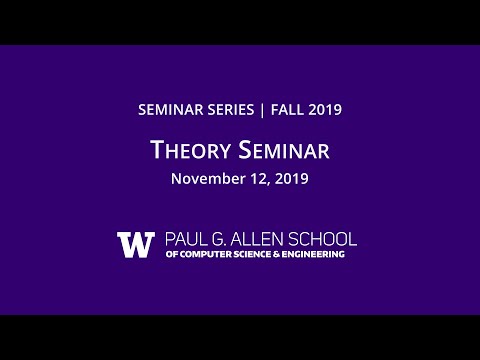Description:
Explore algorithms and hardness results for linear algebra on geometric graphs in this theory seminar. Delve into efficient spectral graph theory for k-graphs, examining problems like matrix-vector multiplication, spectral sparsification, and Laplacian system solving. Investigate the relationship between function parameters and algorithmic efficiency, considering SETH-based hardness results. Learn about the limitations of the fast multipole method and its dimensional dependence. Gain insights into well-separated pairs decomposition, approximate nearest neighbors, and open problems in the field of geometric graph algorithms.

Theory Seminar - Algorithms and Hardness for Linear Algebra on Geometric Graphs, Aaron Schild
Add to list
#Computer Science
#Algorithms and Data Structures
#Mathematics
#Algebra
#Linear Algebra
#Algorithms
#Theoretical Computer Science
#Graph Theory
#Spectral Graph Theory